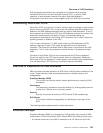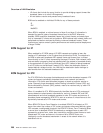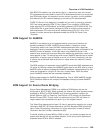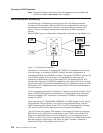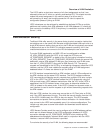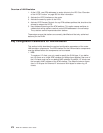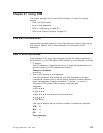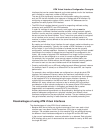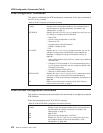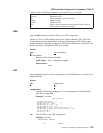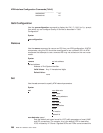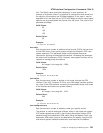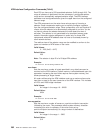interfaces that can be created depends on the data packet size for the interfaces
and is limited to a maximum number of 253 per router.
The use of AVIs significantly improves the configuration options for protocols
such as IPX that are limited to one instance or address per ATM interface. By
configuring an appropriate number of AVIs, several IPX addresses can be
supported on each physical ATM interface.
v The ATM Virtual Interface feature is crucial for supporting multicast routing
protocols (such as MOSPF) over ATM networks.
In order for multicast to operate correctly, each logical subnet
must
be
configured on a different interface because multicast routing protocols typically
function in such a way that a packet coming in from a router interface will never
be sent out over the same interface. Thus, if more than one subnet is configured
on an interface and a source in one subnet sends a multicast packet to a
member in another subnet defined on the same interface, this member will never
receive the packet.
By creating an individual virtual interface for each subnet, packet multicasting can
be performed successfully. Typically, the number of ATM interfaces on a router
will be limited, in turn limiting the number of subnets that can be correctly
configured for multicast operation. However, by creating as many AVIs as needed
(according to the number of subnets that are required to be configured on the
router), the number of physical ATM interfaces will no longer limit the number of
subnets that can be configured on a router for correct multicast operation.
For example, the “one-armed” router cannot support multicast traffic over
interfaces other than ELANs without the AVI feature, because incoming packets
will never be sent out the same interface and will be discarded instead.
v Creating multiple AVIs on an ARI and configuring each different protocol instance
(for example, each IP subnet) on a different AVI on the same ARI, can improve
performance.
For example, when multiple subnets are configured on a single physical ATM
interface, the interface will have to reduce the maximum transmission unit or
MTU (the maximum packet size that can be sent or received over that interface)
to the smallest MTU of all subnets sharing the same interface. However, if
multiple AVIs are created on that ARI and each IP subnet is configured on a
different AVI, every subnet can continue to use its existing MTU size without
consideration of other subnets configured on the same physical ATM interface.
This avoids possible reduction in throughput and delays due to packet
fragmentation and reassembly caused by MTU size reduction.
Another performance improvement can be achieved by distributing the number of
protocol addresses configured on a physical interface over different virtual
interfaces configured on the same physical interface. The per-interface protocol
lists get shortened, resulting in faster searches and reduced processing time.
Disadvantages of using ATM Virtual Interfaces
The disadvantages of using ATM Virtual Interfaces are:
v Because AVIs do not have any physical resources of their own, each virtual
interface may have fewer Virtual Connections (VCs) than a single physical
interface. The available resources (in this example VCs) are partitioned among
the different virtual interfaces configured on a single ARI and the ARI itself.
In the current implementation, resource allocation is
on demand
. Each physical
ATM interface has a pool of resources that are available for use by all AVIs and
the single ARI itself.
ATM Virtual Interface Configuration Concepts
Chapter 21. Using ATM 275



